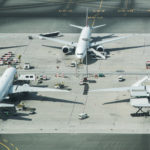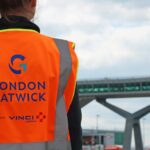Space tourism company HALO Space is conducting its second round of flights in California as it tests its descent and landing systems with a paraglider-type steerable parachute.
The latest test programme includes four flights in total, two of which were successfully completed earlier in September.
HALO Space’s technical team is working to analyse the results and before making the final adjustments in preparation for the last two flights, which will be carried out on Wednesday, September 27.
These tests are performed by lifting the capsule with a helicopter to an altitude of 2,000 metres. Upon release and deployment of the parachute, the capsule will descend at a speed of less than 5 metres per second with a glide ratio of 3.5 to 1, meaning that for every metre it descends vertically, it advances 3.5 metres horizontally.
During the final approach, the capsule will glide down against the wind in a straight line until it lands.
‘Most advanced near-space flight company in the world’
Carlos Mira, CEO of HALO Space, said: “We are applying a rigorous engineering process in the development and integration of HALO’s systems and spacecraft, hand in hand with the best companies in the aerospace sector. Test flights are critical to validate each phase of development. This second battery of test flights positions us as the most advanced near-space flight company in the world.”
Alberto Castrillo, CTO of HALO, added: “Following the success of the first tests, this week we will fly and land our prototype capsule with the paraglider-like steerable parachute.
“Our goal is not only to remotely control the descent of the capsule, but also land it precisely within an area equivalent to that of a soccer field.”
HALO Space
The Company conducted its first test flight in December 2022 in Hyderabad, India, where it successfully lifted its prototype capsule to 37 kilometres altitude with a stratospheric hydrogen-filled balloon.
HALO Space plans to begin operating commercial flights in 2025 and plans to make 400 trips a year from 2029, taking more than 3,000 passengers into the stratosphere in their zero-emissions balloon flights.
Subscribe to the FINN weekly newsletter

